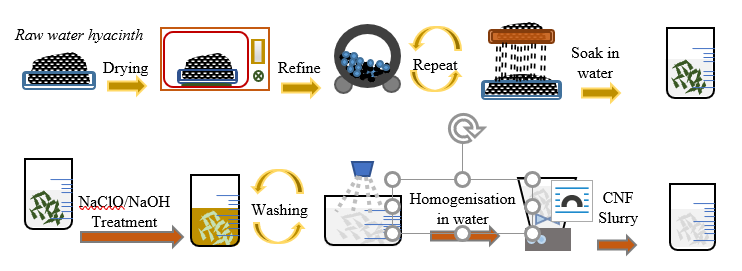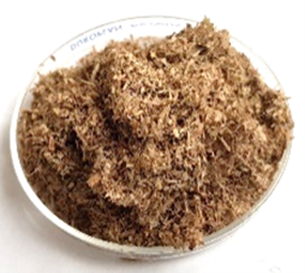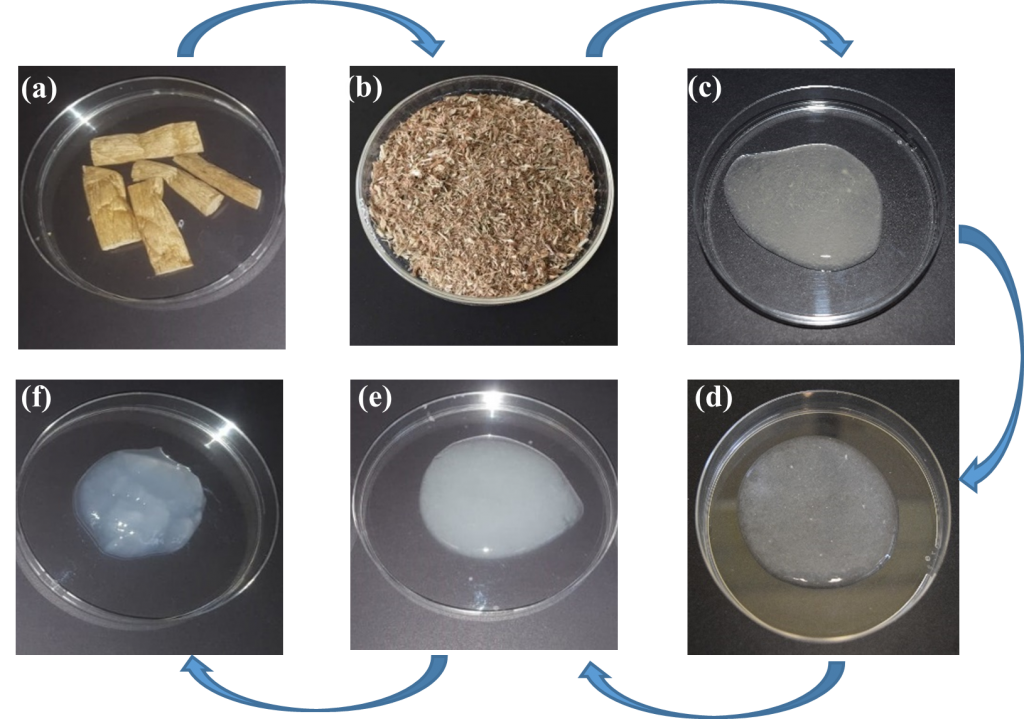The schematic presentation of the process for preparing cellulose nanofibrils from water hyacinth is summarised in the graph below:

Water hyacinth (WH) stems were harvested from a local lake in Taman Tasik Seri Aman, Puchong, Malaysia. The WH stems were carefully separated from the roots and leaves, washed and air dried for 3 days before being ground into smaller size as raw materials (see the graph below):

The dried water hyacinth was soaked in water to form slurry before being subjected to a delignification process using NaClO solution. Additionally, the material was processed in 1% NaOH solution to continue the extraction process. Both reactions were completed at room temperature and the material was washed using ultrapure water after each chemical reaction. Upon the completion of the above, a 0.5% cellulose slurry was prepared. To obtain nanofibrils, the cellulose slurry was further treated in a high shear homogeniser (PSI-20, Adaptive Instruments, UK) by passing it through a 200µm Z-shape interaction chamber for 1 pass, at 700bar.
The morphology of samples at various steps in the process can be seen in the graph below. (a) the dried stems; (b) ground WH; (c) WH after first bleaching; (d) WH after NaOH; (e) WH cellulose after second bleaching; (f) WH CNF gel-like material (after homegenisation process). Note: all slurries are shown at 0.5 wt. %.

Researchers in the project team demonstrate the practical procedure for extracting nanocellulose from water hyacinth in this video:
